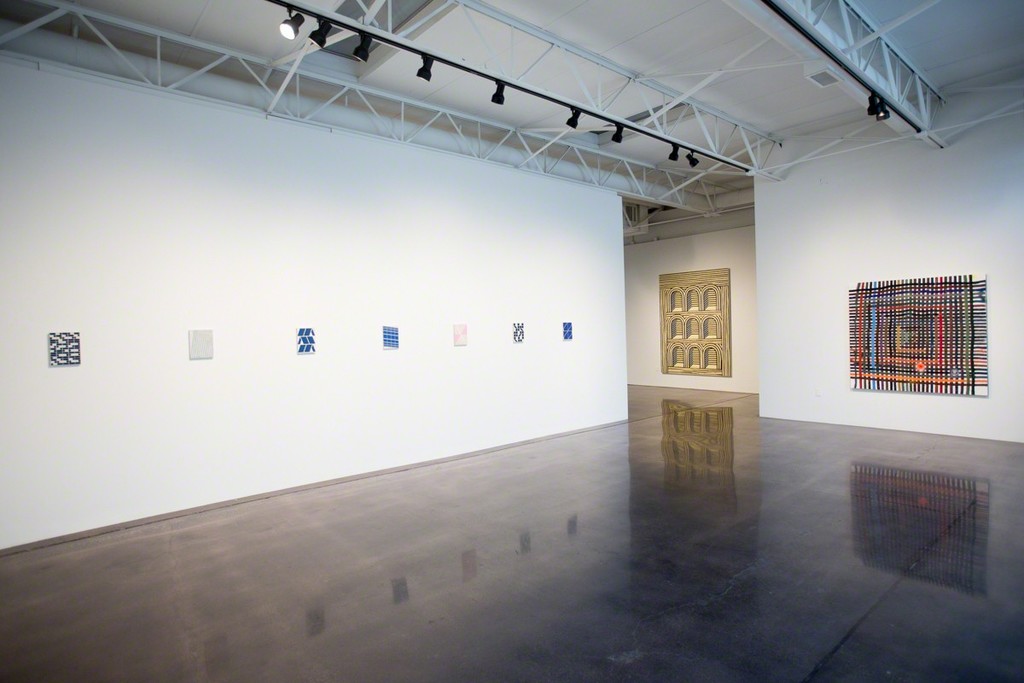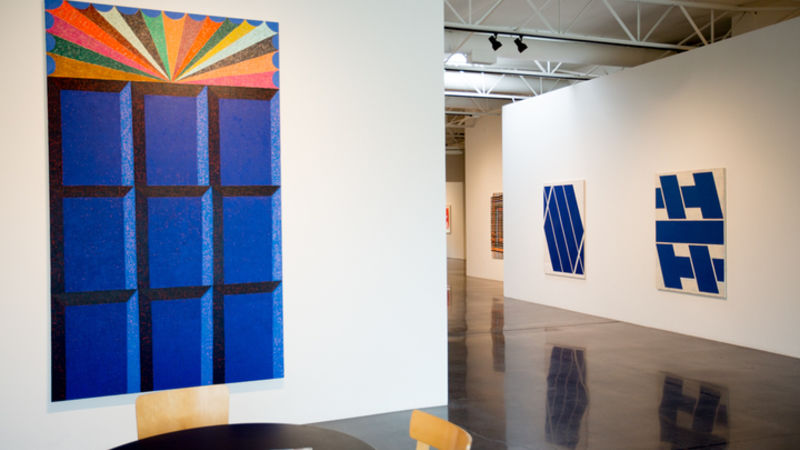In defense of the strip, Barry Whistler Gallery has organized an exhibition of Linear Abstraction. The show includes Frank Badur, Alain Biltereyst, Nathan Green, Ellsworth Kelly, Matt Kleberg, Alicia McCarthy, and Kenneth Noland. When writing about the idea of a strip, I mean a wide line that is often in color. This show uses strips in varying degree of complexity, but essentially these paintings celebrate the fat line.
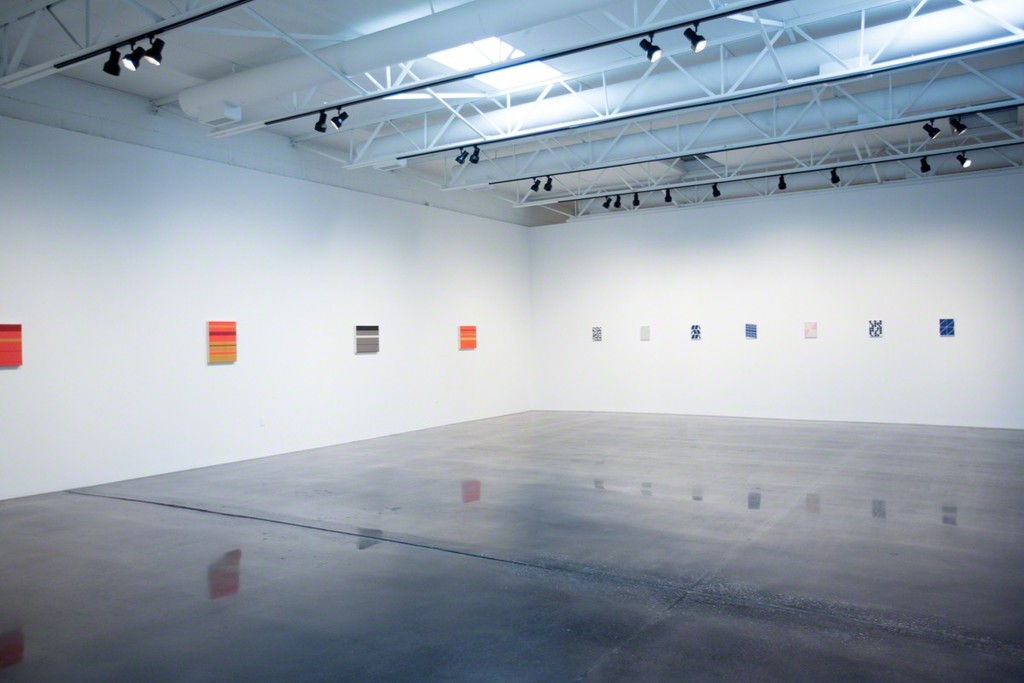
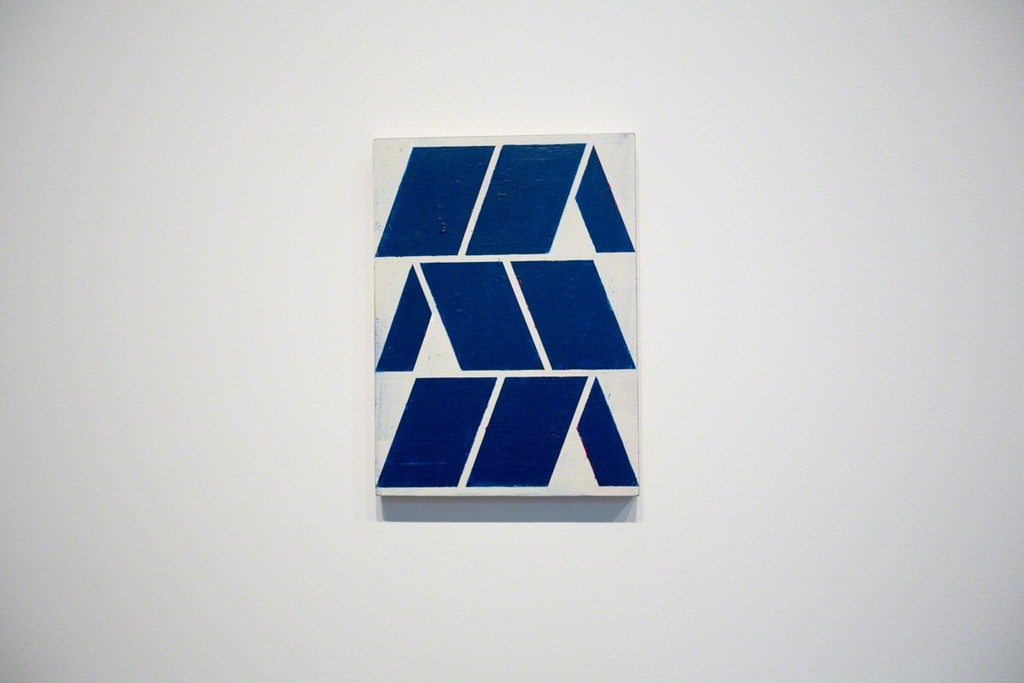
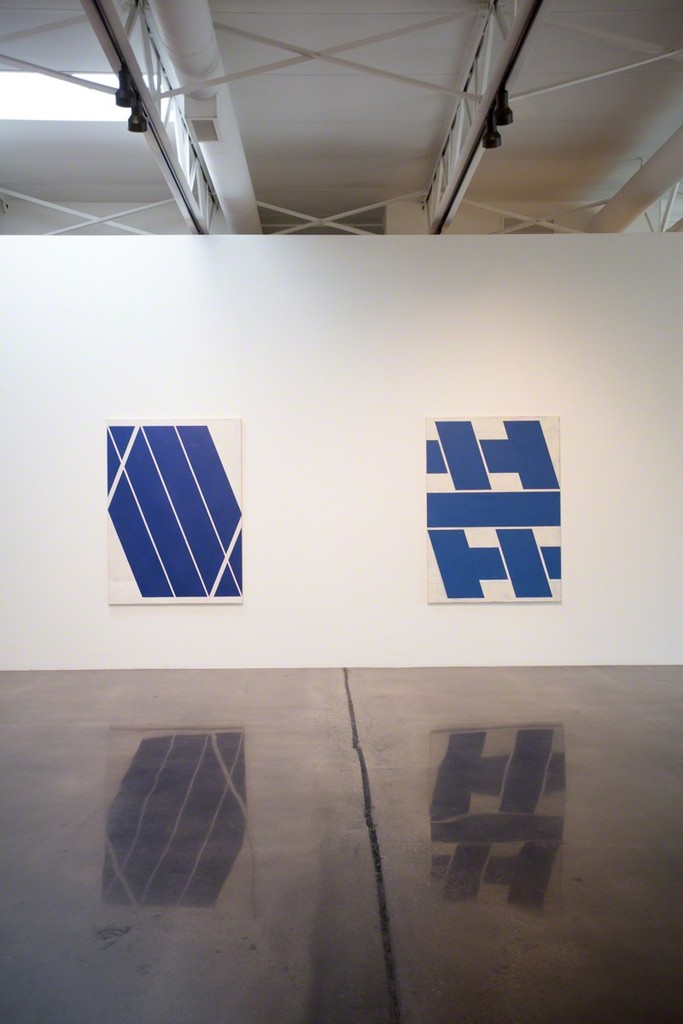
Alain Biltereyst and Nathan Green go heavy on blocking in strips of color. Only Biltereyst keeps it simple and clean, while Green allows elements of gradience and chance drips to enter the work. Biltereyst lets you rest your eyes with quiet whites, soothing blues, and a slightly disruptive pink. I can meditate on Biltereyst’s work the gather some energy to meet the day from Green’s painting.
